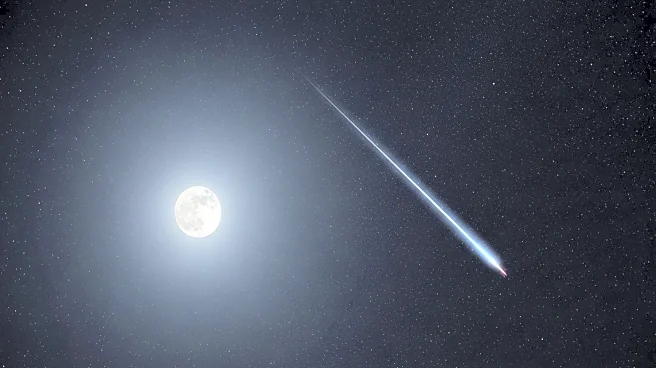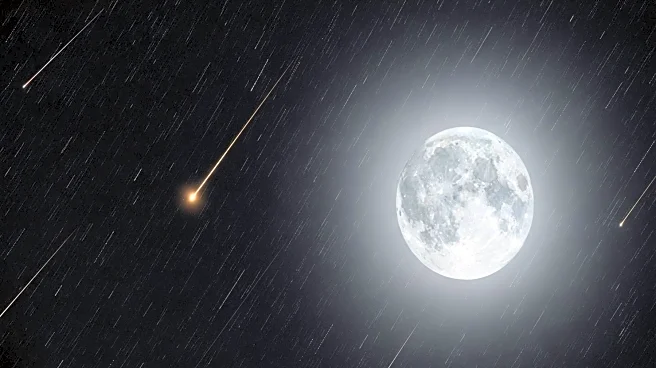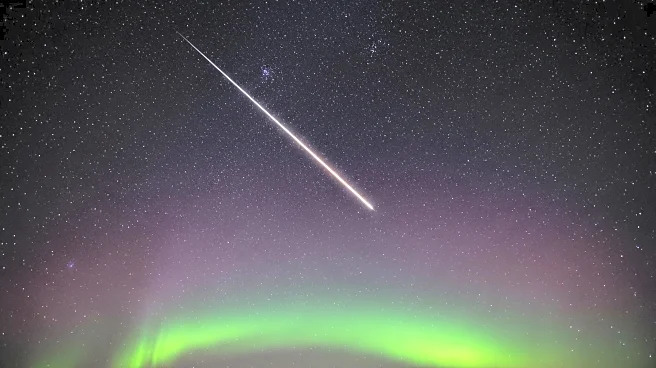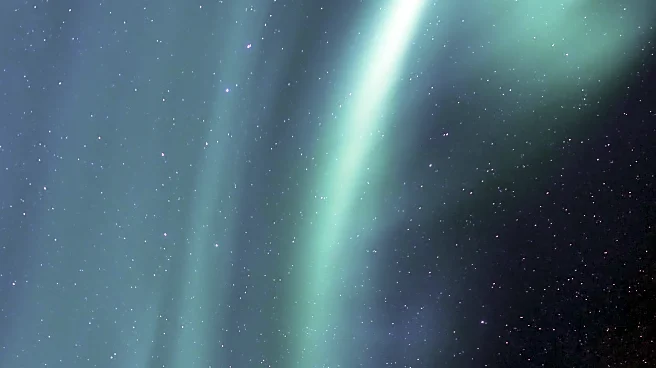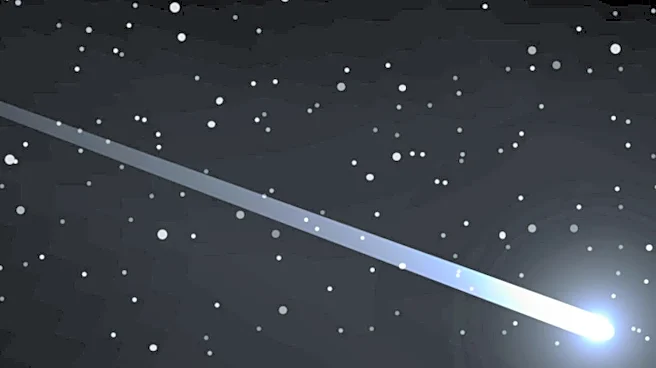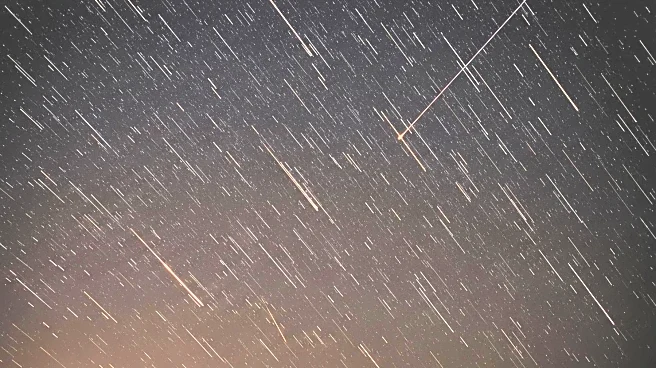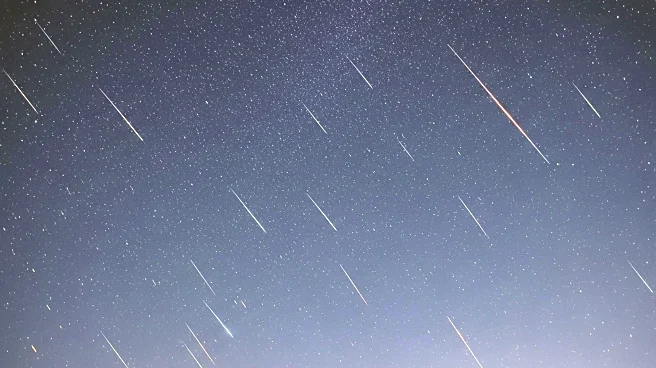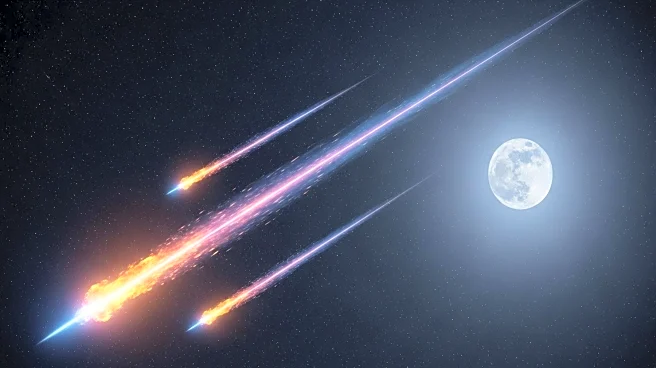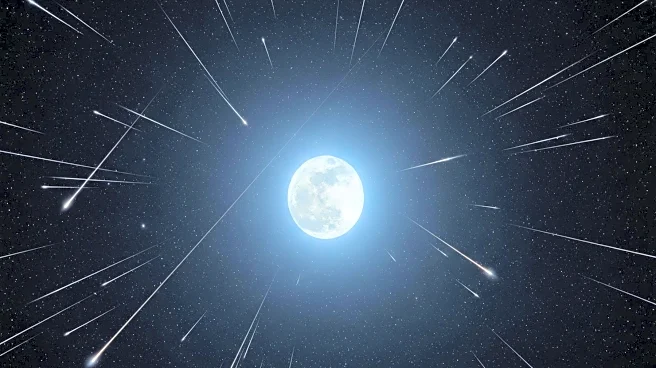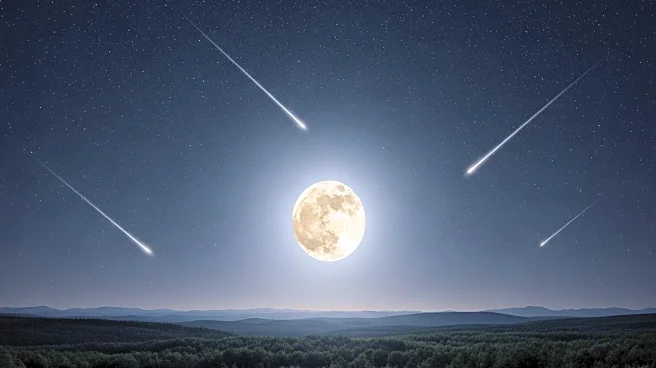What's Happening?
The Draconid meteor shower, active from October 6 to 10, 2025, is set to peak on the evening of October 8. This meteor shower, originating from comet 21P/Giacobini-Zinner, typically produces about 10 meteors per hour. However, this year's viewing is challenged by a bright moon, which may obscure many of the meteors. The shower is best observed in the early evening, with the constellation Draco high in the sky. Clear skies are essential for optimal viewing.
Why It's Important?
The Draconid meteor shower provides an opportunity for public engagement with astronomy, despite the challenges posed by moonlight. It serves as a reminder of the ongoing interactions between Earth and cometary debris, offering insights into the solar system's dynamics. The event also highlights the importance of preserving dark skies to enhance visibility of celestial phenomena, encouraging efforts to reduce light pollution.
What's Next?
The Orionid meteor shower, peaking later in October, will offer another chance for skywatchers to observe meteors. With a new moon coinciding with the Orionids' peak, visibility is expected to be better, allowing for a more impressive display. This sequence of meteor showers underscores October as a significant month for astronomical events.
Beyond the Headlines
The Draconid meteor shower's connection to comet 21P/Giacobini-Zinner provides valuable data for scientists studying the evolution of comets and the solar system. The event also emphasizes the need for public awareness and action to combat light pollution, ensuring future generations can enjoy the wonders of the night sky.

